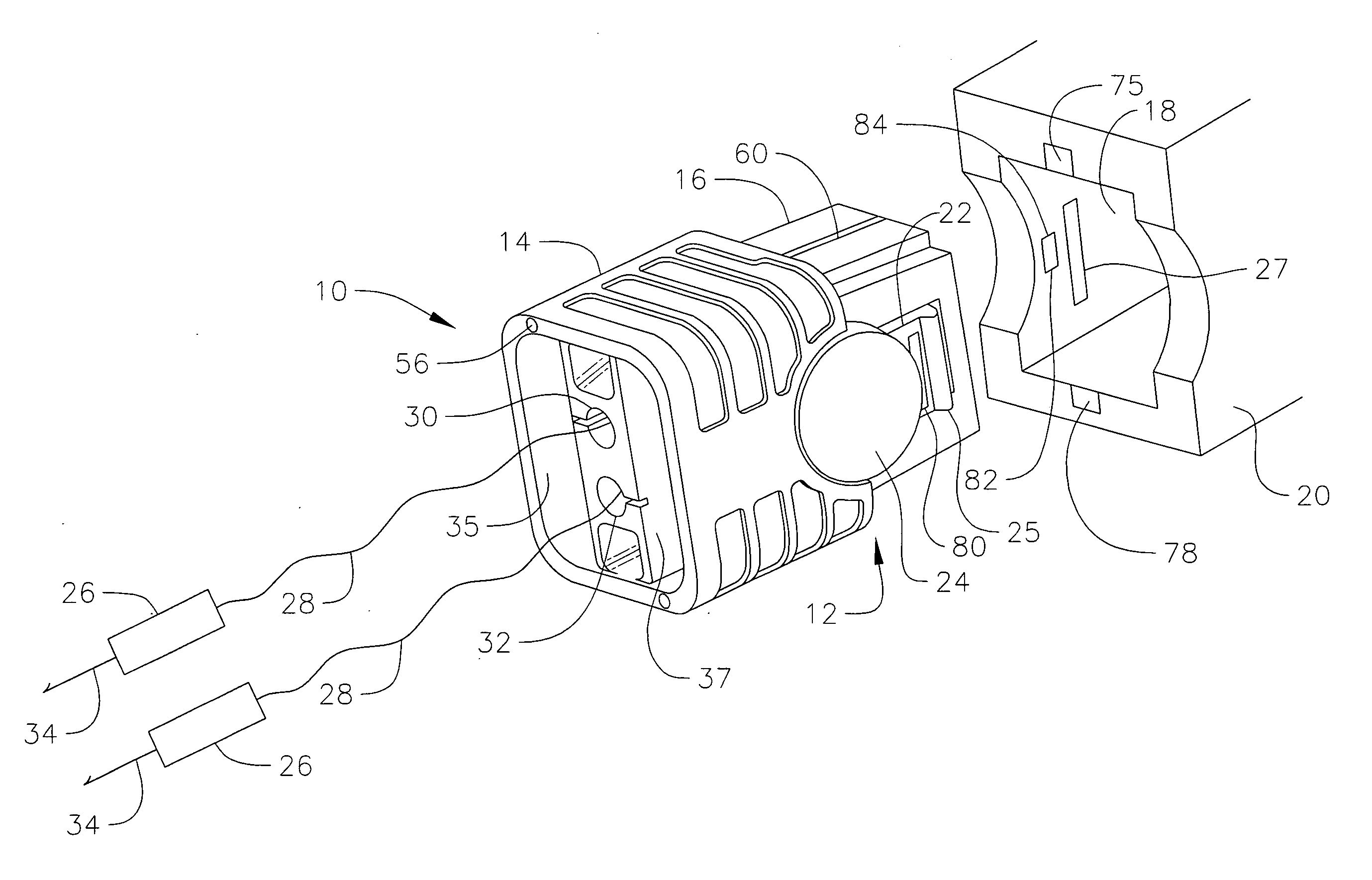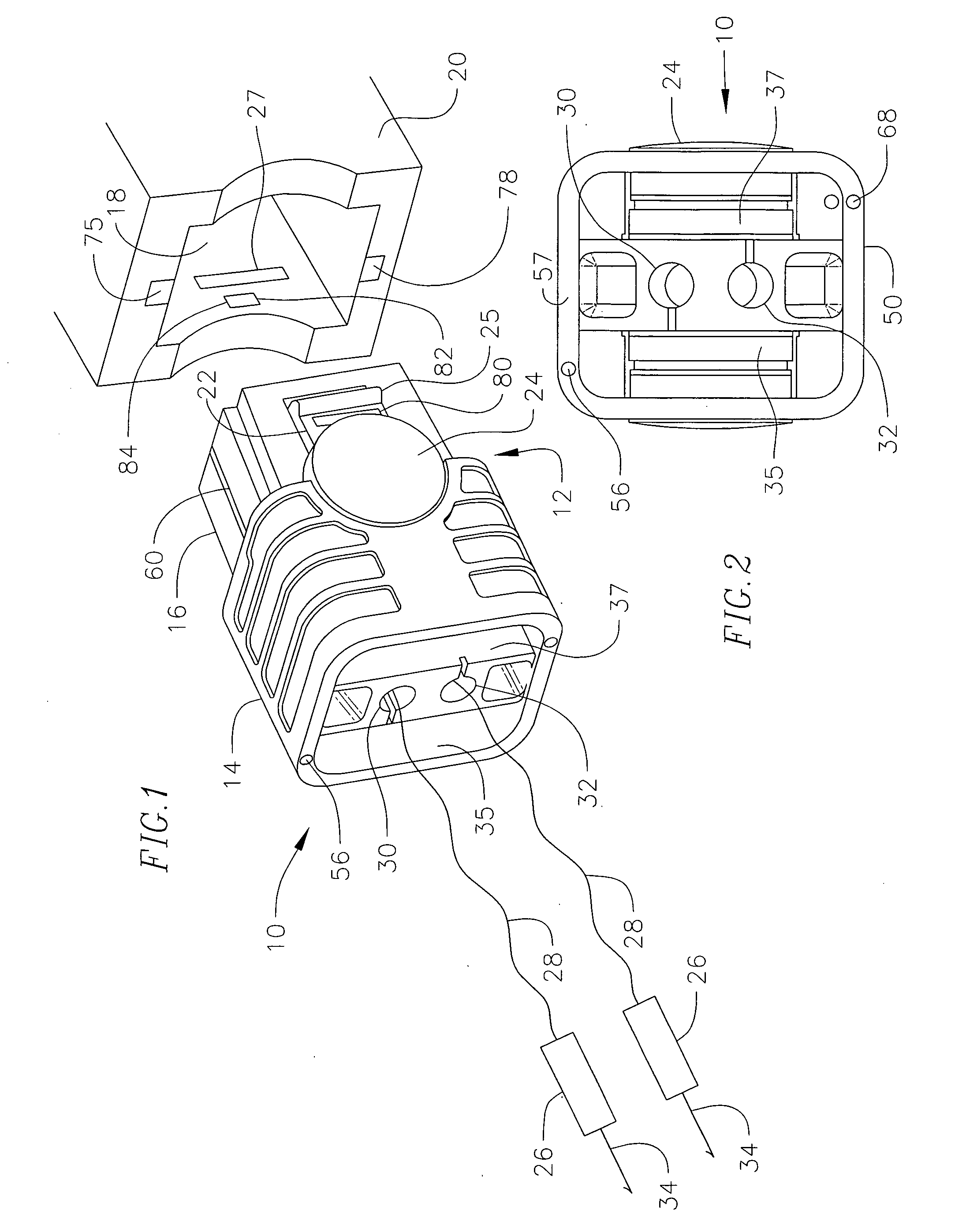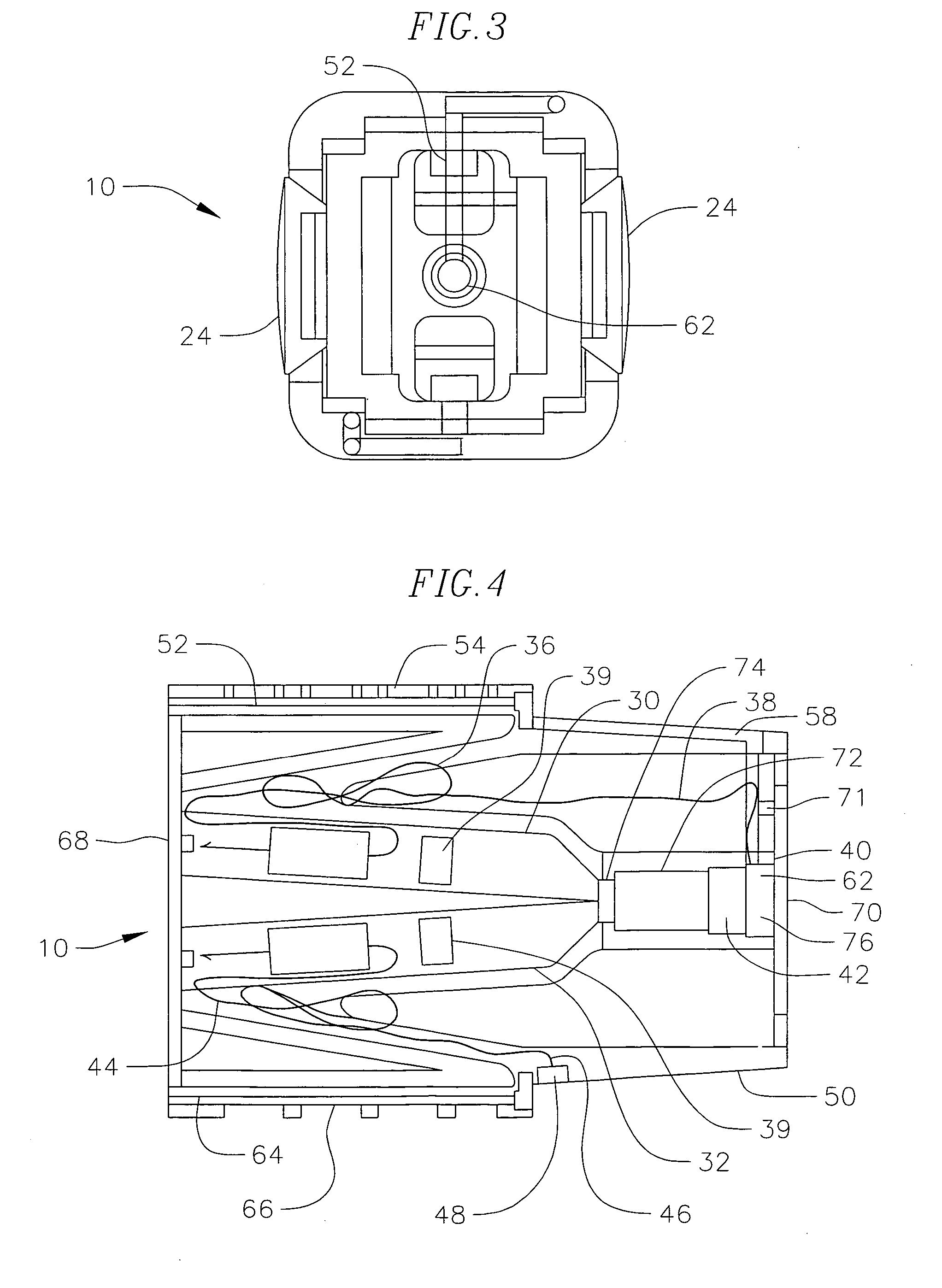Ammunition for electrical discharge weapon
a technology of electrical discharge and ammunition, applied in the field of electric immobilization weapons, can solve the problems of human beings being disabled, shocking current arcing through the shortest available air gap, subduing the target, etc., and achieves the effects of increasing the arc track path, increasing the arc tracking path, and convenient use and storag
- Summary
- Abstract
- Description
- Claims
- Application Information
AI Technical Summary
Benefits of technology
Problems solved by technology
Method used
Image
Examples
Embodiment Construction
[0014] Referring to FIGS. 1 through 4, an ammunition cartridge 10 of the present invention is illustrated. The cartridge has a housing 12 formed of high impact plastic having a forward section 14, and a rear section 16. Rear section 16 is received within a cavity or receiver port 18 of an electrical discharge weapon 20. Flexible flanges 22 extend along each side of the housing, and include a boss 24 to flex the flange during insertion and removal of the cartridge from the cavity 18. The flange includes a raised stop 25 for receipt into a recess 27 in port 18 to retain the cartridge in the weapon. Dart 26 and wire assemblies 28 are positioned within dart chambers 30 and 32 contained within the housing 12. Dart chambers 30 and 32 extend into the housing at an angle so that the darts when propelled from the housing separate from one another in flight. Darts 26 each include a barbed hook 34. The wire assemblies 28 include a span of insulated conductor which is wound 36 and positioned wi...
PUM
 Login to View More
Login to View More Abstract
Description
Claims
Application Information
 Login to View More
Login to View More - R&D
- Intellectual Property
- Life Sciences
- Materials
- Tech Scout
- Unparalleled Data Quality
- Higher Quality Content
- 60% Fewer Hallucinations
Browse by: Latest US Patents, China's latest patents, Technical Efficacy Thesaurus, Application Domain, Technology Topic, Popular Technical Reports.
© 2025 PatSnap. All rights reserved.Legal|Privacy policy|Modern Slavery Act Transparency Statement|Sitemap|About US| Contact US: help@patsnap.com



